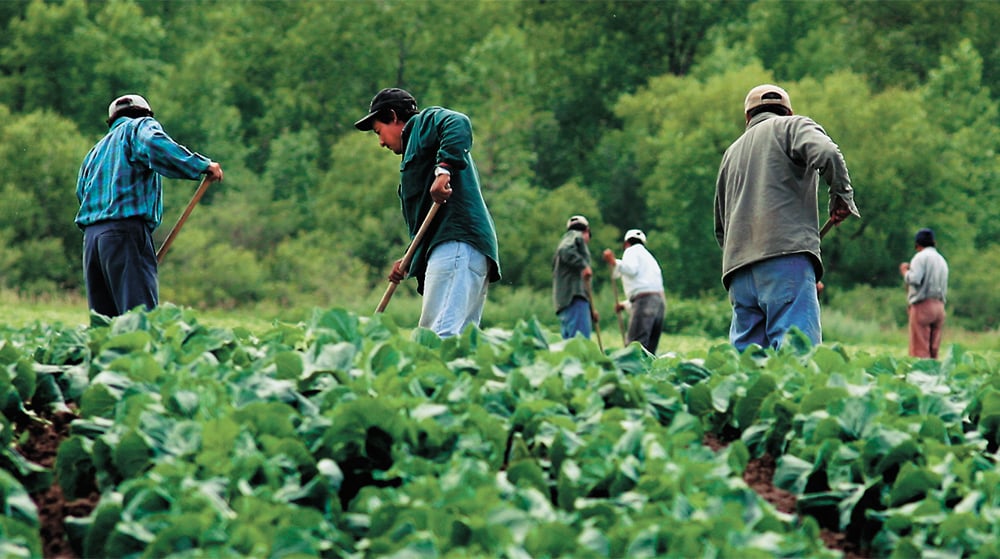Canada is launching a New Immigration Stream in 2025 to recruit foreign workers for the agriculture and fish processing industries. This new pathway is designed to fill urgent labor shortages in rural communities and seasonal sectors. It replaces the recently closed Agri-Food Pilot and is expected to offer a faster, clearer process than existing options like the Canada farm worker visa or the Canada Seasonal Work Visa.
The New Immigration Stream will provide sector-specific work permits, streamlined processing, and potential pathways to permanent residency. It’s a major step toward stabilizing Canada’s food supply chain and giving international workers real opportunities to build a future in the country.
Overview of the New Immigration Stream
The New Immigration Stream aims to recruit and retain foreign workers in agriculture and fish processing. IRCC and Employment and Social Development Canada (ESDC) will jointly manage the program. It runs alongside standard work-permit pathways but targets rural and seasonal roles that often go unfilled.
Key points:
-
Sector focus: farms, fisheries, and processing facilities
-
Permit type: sector-specific work permit
-
Launch window: late 2025
-
Partners: IRCC & ESDC
-
Goal: address labor gaps, support local economies
By tailoring requirements to these industries, the New Immigration Stream offers a clearer path than the closed Agri‑Food Pilot and standard work permits. It aligns with Canada’s broader economic plan.
Why Canada Needs a New Immigration Stream
Canada’s farms and fish plants need workers year-round. Seasonal spikes, rural locations, and tough duties drive high turnover. Traditional work visas do not always match these demands:
-
Timing: Standard visas process slowly relative to planting or harvest seasons.
-
Location: Rural employers struggle to compete with urban opportunities.
-
Retention: Temporary workers leave when they have no path to extend stay.
The New Immigration Stream addresses these gaps. It offers faster processing and a targeted permit. Employers gain a stable labor base. Workers gain predictable status.
Key Features of the New Immigration Stream
The New Immigration Stream will include:
| Feature | Details |
|---|---|
| Sectors Covered | Agriculture (field, greenhouse, nursery) and fish processing (canning, packing, filleting) |
| Permit Type | Sector-specific work permit tied to job offer |
| Duration | Up to 2 years, with option to renew |
| Processing Time | Target: 4–6 weeks |
| Pathway to PR | Yes. Certain roles can lead to permanent residency applications |
| Bilateral Agreements | Possible partnerships with select countries for worker supply |
| Labor Market Impact | No Labor Market Impact Assessment (LMIA) required for pre-approved employers in designated zones |
| Training & Support | Mandatory orientation on Canadian workplace standards |
These features set the New Immigration Stream apart from existing categories like the Canada Seasonal Work Visa and Canada farm worker visa, which still rely on LMIAs and general work-permit rules.
Eligibility Requirements for the New Immigration Stream
To qualify under the New Immigration Stream, applicants must meet these criteria:
-
Job Offer
-
Full-time, non-management role in agriculture or fish processing
-
Written offer from an approved Canadian employer
-
-
Language
-
CLB/NCLC 4 in English or French (basic ability to follow instructions)
-
-
Work Experience
-
At least 1 year of relevant experience in the last 3 years (e.g., harvesting, packing)
-
-
Education
-
Minimum high-school diploma or equivalent (for supervisory roles)
-
-
Health and Security
-
Medical exam by a panel physician
-
Police clearance certificate
-
-
Intent to Return
-
For purely seasonal roles: evidence of ties to home country (e.g., property, family)
-
Applicants who complete two seasons of work without major infractions may apply for an extension or permanent residency under IRCC’s targeted pathway. This approach differs from the Canada farm worker visa, which generally ties workers strictly to one employer and limits renewals.
Application Process for the New Immigration Stream
The New Immigration Stream follows a structured two-step process:
-
Employer Pre‑approval
-
Employer registers with IRCC and ESDC
-
Verifies facility meets health, safety, and wage standards
-
Obtains sector-specific approval code
-
-
Worker Application
-
Complete IRCC work-permit application online (IRCC Work Permits)
-
Provide job offer letter with approval code
-
Submit biometrics, medical exam results, and language test scores
-
Pay fees (permit, processing, biometrics)
-
Typical processing times aim for 4–6 weeks. Applicants outside visa‑exempt countries must apply at a visa office abroad.
Document Checklist
| Document | Who Prepares |
|---|---|
| Job Offer Letter | Employer |
| Approval Code | IRCC/ESDC |
| Proof of Work Experience | Applicant |
| Language Test Results | Applicant |
| Police Clearance | Applicant |
| Medical Exam Certificate | Panel Physician |
| Proof of Funds (if seasonal) | Applicant |
This clear process contrasts with the Canada Seasonal Work Visa, which often requires an LMIA and can take 3–4 months to process.
Impact on Canada Farm Worker Visa and Canada Seasonal Work Visa
The New Immigration Stream will reshape how agricultural employers and foreign workers interact with Canadian law:
-
Speed: Faster than applying under Canada farm worker visa pathways that require LMIAs.
-
Flexibility: Allows renewals and transition to permanent residency—unlike strictly seasonal programs.
-
Stability: Pre‑approved employers can retain skilled workers across seasons.
-
Fair Standards: Government oversight ensures workers earn at least provincial median wages and receive safe housing.
Employers who once relied solely on the Canada Seasonal Work Visa can now access a program designed for long‑term labor needs. Workers can plan careers, not just seasons.
Future Outlook of the New Immigration Stream
As Canada rolls out the New Immigration Stream, stakeholders should plan now:
-
Employers:
Employers in agriculture and fish processing will play a central role in the success of this program. To benefit from the New Immigration Stream, employers should:
-
Register with IRCC and ESDC as designated participants once program guidelines are published.
-
Undergo compliance checks to ensure they meet Canadian labor standards, including fair wages, safe housing, and workplace protections.
-
Train HR teams on immigration processes and documentation to handle job offers, onboarding, and renewals effectively.
-
Plan for year-round workforce needs, not just seasonal demands, by identifying roles that could become permanent and investing in long-term worker retention.
By doing this, employers will not only meet eligibility requirements but also improve recruitment outcomes in an increasingly competitive labor market.
-
-
Workers:
For workers outside Canada hoping to join the program, early preparation is key. Here’s what to do:
-
Collect proof of relevant experience in agriculture, food production, or fish processing. This includes pay stubs, reference letters, and work contracts.
-
Take a language test (IELTS General or CELPIP for English; TEF for French) and aim for a minimum CLB 4, which is the likely language requirement.
-
Complete secondary education (if not already) to improve your competitiveness for roles that could lead to permanent residency.
-
Schedule a medical exam with an IRCC-approved panel physician to reduce delays once application intake opens.
-
Projections and Program Evolution
IRCC has signaled that the New Immigration Stream could evolve significantly after its launch:
-
Quotas may expand based on demand and labor market data. The government will monitor employer participation and worker retention.
-
Bilateral labor agreements are likely to be signed with major source countries (e.g., Philippines, Mexico, Kenya, Jamaica), simplifying recruitment and standardizing protections.
-
The stream may be widened to include allied sectors like food manufacturing, meat cutting, and seafood packaging—areas facing similar labor issues.
-
Transition to permanent residency could become standard for long-term workers with clean records and employer support.
-
Digital application systems may be introduced to streamline employer registration, compliance, and permit tracking.
Canada’s New Immigration Stream represents a focused, efficient, and fair approach to filling critical roles in agriculture and fish processing. By offering faster processing, renewals, and a pathway to permanent residency, this program stands to benefit employers, foreign workers, and Canada’s economy.




